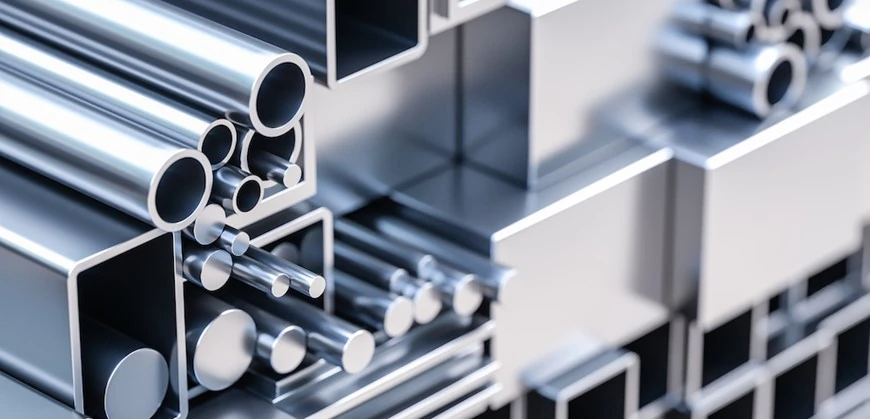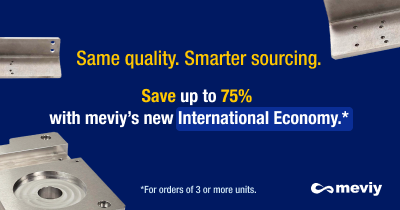BLOG » What Is EN 1.4401 equiv. (SUS316): Features, Applications, and Differences from Other Alloys
What Is EN 1.4401 equiv. (SUS316): Features, Applications, and Differences from Other Alloys
Stainless steel finds extensive use in various industrial products, ranging from plant piping to construction materials and components for industrial machinery. There are many types of stainless steel, which can be divided into three categories: austenitic, ferritic, and martensitic. After delving into the difference between EN 1.4305 equiv. (SUS303) and EN 1.4301 equiv. (SUS304), in this article we’ll focus on another specific stainless steel: EN 1.4401 EQUIV. (SUS316). What is EN 1.4401 EQUIV. (SUS316)? What are its characteristics, applications, and distinctions from other alloys? We will discuss these topics and more in this article.

What is EN 1.4401 equiv. (SUS316)?
EN 1.4401 equiv. (SUS316) material belongs to the austenitic stainless steel family, similar to EN 1.4301 equiv.. It contains 18% chromium, 10-14% nickel, and 2.5% molybdenum, exhibiting non-magnetic properties. Stainless steels, including austenitic 316, boast high corrosion resistance, preventing corrosion by forming a passive film on the surface. This passive film, created by the oxidation of chromium, acts as a protective cover, preventing iron oxidation. Given the chromium content, it is inherently corrosion-resistant, with a film forming when chromium surpasses 11%. Even if the film gets momentarily disrupted, it promptly reforms, ensuring sustained corrosion resistance and a minimal propensity for rusting.
Features of EN 1.4401 Equiv (SUS316)
EN 1.4401 EQUIV. (SUS316) incorporates molybdenum, another component forming the passive film. Molybdenum is about three times denser than chromium. Consequently, stainless steel 316 exhibits superior corrosion resistance compared to EN 1.4301 equiv., making it a suitable material for areas exposed to seawater. However, due to its relatively lower prevalence than the commonly used EN 1.4301 equiv, EN 1.4401 equiv. (SUS316) may face challenges in terms of availability.
Advantages of EN 1.4401 equiv. (SUS316)
EN 1.4401 equiv. (SUS316) material excels in corrosion resistance, making it resistant to corrosion even in harsh environments exposed to chloride, such as seawater. It also demonstrates robust resistance to stress and cracking and boasts excellent weldability. Furthermore, being non-magnetic, it is suitable for use near precision instruments handling magnetic fields, like MRI machines.
Disadvantages of EN 1.4401 equiv. (SUS316)
While it excels in resisting corrosion, especially in environments like seawater, EN 1.4401 equiv. (SUS316) exhibits lower corrosion resistance in acidic conditions compared to EN 1.4301 equiv. Moreover, its lower prevalence and higher cost can be considered as disadvantages.
Austenitic stainless steels, in principle, are non-magnetic. However, if there is a change in the internal crystalline structure during processing, some portions may exhibit magnetism. To eliminate magnetism, heating to around 1150°C followed by rapid cooling is necessary, adding complexity and cost to the manufacturing process.
Due to the presence of molybdenum, it’s machinability is reduced, requiring careful consideration during cutting operations. Additionally, EN 1.4401 equiv. (SUS316) has a low thermal conductivity, resulting in increased tool temperatures during processing. Thus, precautions such as cooling tools during cutting or slowing down the processing speed to prevent temperature rise are necessary.
Applications of EN 1.4401 equiv. (SUS316)
- Pumps and Piping Components for Liquid Containing Chlorine, Such as Seawater:
Due to its robust corrosion resistance, EN 1.4401 equiv. (SUS316) is frequently employed in areas exposed to seawater. Main applications include coastal plant facilities, piping, valves, and pumps in factories utilizing seawater.
- Marine Components:
Given that ships are constantly in contact with seawater, materials with high corrosion resistance are crucial. EN 1.4401 equiv. (SUS316) is used in large vessels like tankers that transport chemicals.
- Architectural Components in Coastal Areas:
Coastal areas, subject to corrosion from sea breezes, often use EN 1.4401 equiv. (SUS316) in architectural components such as external wall panels.
- Piping Components in Coastal and Deicing Agent Spread Regions:
Deicing agents, primarily composed of sodium chloride or calcium chloride, have corrosive potential similar to seawater. In regions with deicing agents, EN 1.4401 equiv. (SUS316) is utilized for piping components.
- Commercial Food Storage Containers:
As condiments usually contain salt, EN 1.4401 equiv. (SUS316), which is resistant to corrosion, is used in commercial food storage containers.
Differences Between EN 1.4401 equiv. (SUS316) and Other Stainless Materials
Difference from EN 1.4301 equiv.
Mechanical properties like tensile strength between EN 1.4301 equiv. and EN 1.4401 equiv. (SUS316) are quite similar. However, differences exist in corrosion resistance, cost, and workability. EN 1.4301 equiv., with 18% chromium and 8% nickel but lacking molybdenum, differs from EN 1.4401 equiv. (SUS316) in terms of corrosion resistance, cost, and workability. While EN 1.4301 equiv. is less resistant to chloride environments, making it less suitable for places exposed to seawater, EN 1.4401 equiv. (SUS316) excels in corrosion resistance, making it suitable for areas affected by sea breeze and seawater. EN 1.4301 equiv., with lower nickel content, is relatively cost-effective and widely available, whereas EN 1.4401 equiv. (SUS316) is costlier and less prevalent. Additionally, EN 1.4301 equiv. generally has better machinability than EN 1.4401 equiv. (SUS316).
Difference from EN 1.4016 equiv.
EN 1.4016 equiv., a representative ferritic stainless steel, contains chromium but lacks nickel. It is magnetic and generally more affordable than EN 1.4401 equiv. (SUS316). Although EN 1.4016 equiv. is more susceptible to corrosion than EN 1.4401 equiv. (SUS316) or EN 1.4301 equiv., it has different mechanical properties. EN 1.4016 equiv. has lower tensile strength and is less ductile than EN 1.4401 equiv. (SUS316). Additionally, EN 1.4016 equiv. has a lower coefficient of thermal expansion, resulting in less distortion from heat and lower susceptibility to heat deformation during welding. However, its strength diminishes in high-temperature environments exceeding 500°C. Therefore, careful consideration of the usage environment is essential.
Conclusion
The most important characteristic of EN 1.4401 equiv. (SUS316) stainless steel is its corrosion resistance. It is also resistant to corrosion and non-magnetic, making it suitable for use in situations where steel is difficult to use.
When designing parts that come into contact with seawater or chlorides, EN 1.4401 equiv. (SUS316) is indeed the best choice for you.
Since the cost is higher than other alloys, it is recommended to select an appropriate material according to the intended use and environment.
 Deutsch
Deutsch Français
Français Español
Español Italiano
Italiano Polski
Polski